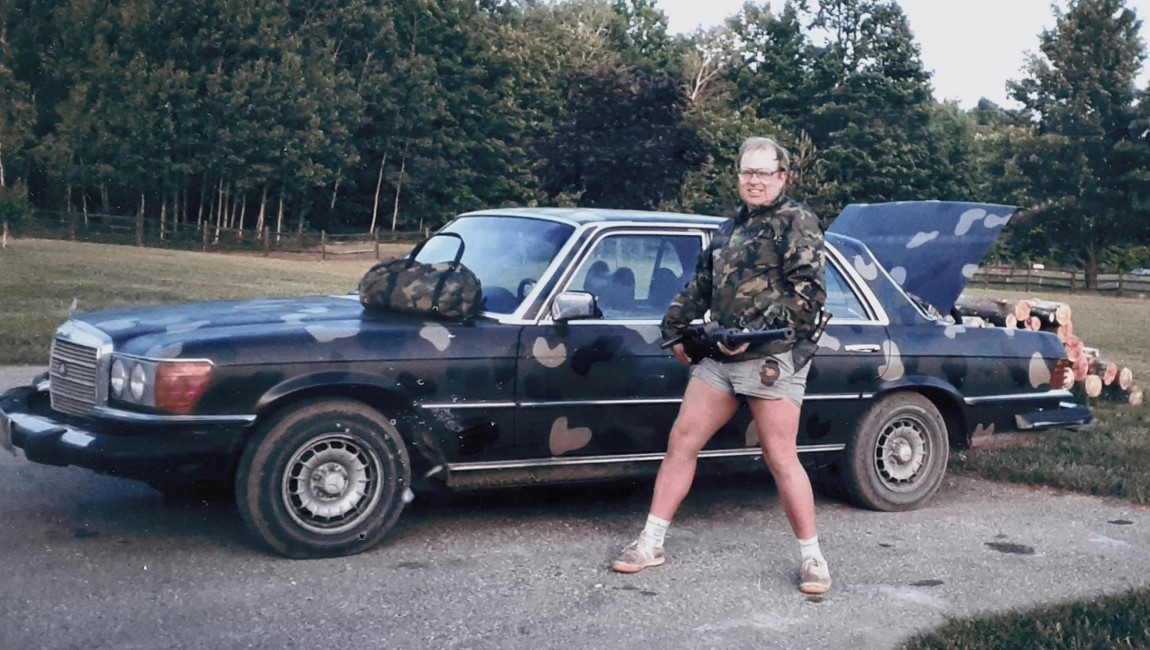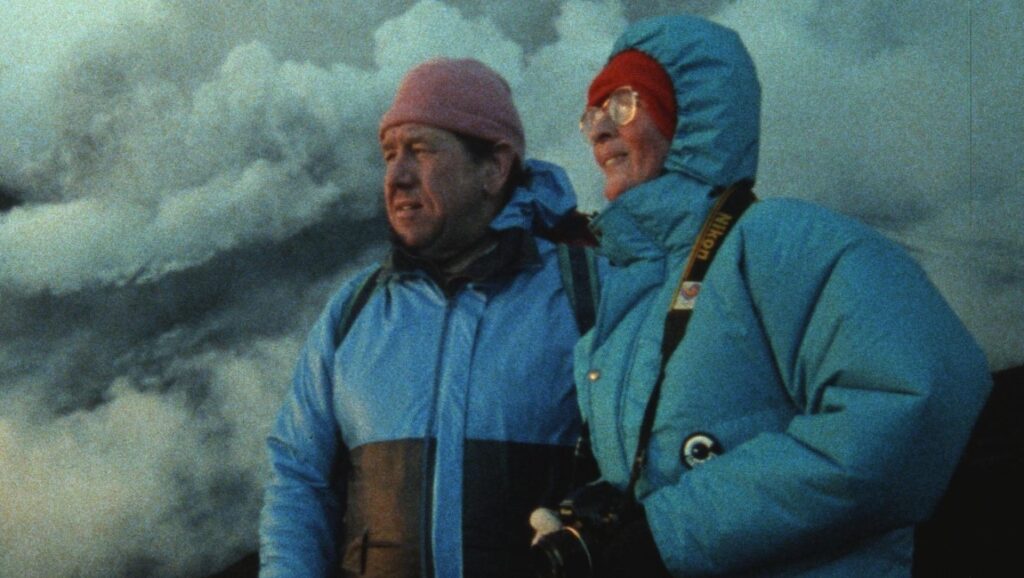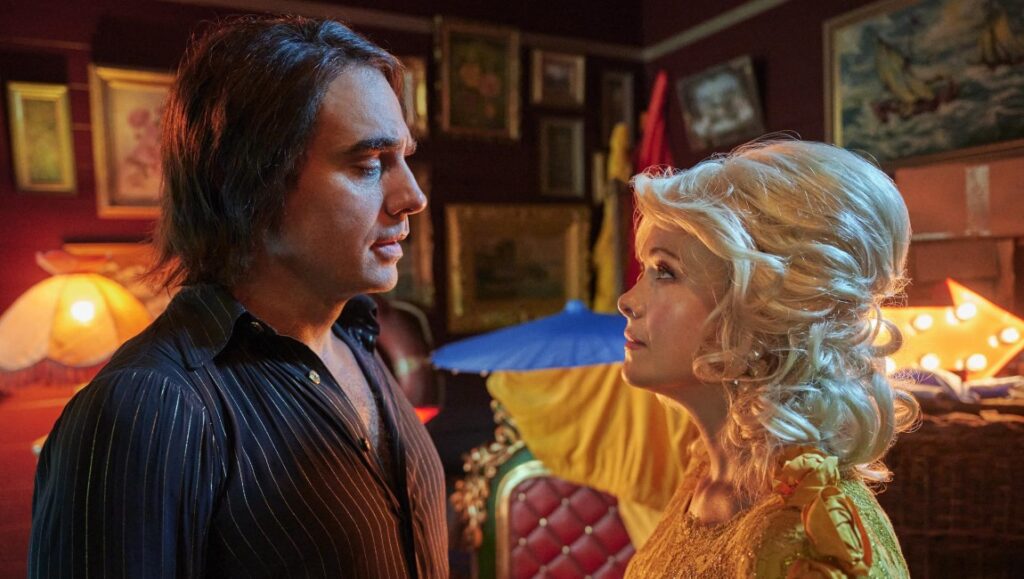2nd Chance
Ramin Bahrani, once again, has something to say about the state of the modern-day American Dream. That “something,” per usual for him and many filmmakers of his ilk, is re-stating the plainly obvious in all caps and with some choice underlining: capitalism is BAD (more like crapitalism, amirite?), everything nowadays about profits and percentages, and because of these two broad axioms, we’ve lost our mutual humanity as a result. But Bahrani seems to think that we as a collective audience haven’t gotten it yet, even after an onslaught of post-Big Short exercises in telling us how we’re blind idiots to corporate greed; this may also help explain why each of his recent feature-length melodramas has become more didactic in terms of spelling all of this out. The absolute nadir of this type of moral handwringing was, at first, At Any Price, a complete and utter misfire (and a Roger Ebert 4-star) about the supposed sinister world of seed patents, which was practically dead on arrival with a central topic that bland — it also happened to feature one of Dennis Quaid’s most buggin’ performances. That was, the nadir until 99 Homes came along with a cigar-twirling Michael Shannon to hammer it all home even further, ending with a literal machismo-heavy screaming match that would make the likes of Nicholas Ray blush.
Now there’s 2nd Chance, Bahrani’s first foray into documentary filmmaking after last year’s The White Tiger — which somehow secured him his first screenwriting Oscar nomination — that operates in the same blunt-force register as his narrative ones. He even went to the trouble of spelling out via voiceover narration what should be the doc’s subtext, but who needs that when you have an audience to educate? “What drew me to Richard were his contradictions,” he pensively states within the first ten minutes, worried that we might not get that some rich asshole is a walking inconsistency unless he flat-out tells us. The Richard in question — who’s the central subject of the doc as a whole — is human reptile Richard Davis, a once failed Detroit-based pizzeria owner who later invented the first bulletproof vests made of kevlar and eventually founded Second Chance, a body armor manufacturing company based out of Northern Michigan. In order to promote his new technology, Davis would travel to local police stations and “test it out” by shooting himself point-blank in the chest while wearing said vest; as Bahrani also mentions, “In 500 million years, Richard Davis is the only man to shoot himself 192 times,” a factoid that, like much of the information provided throughout, really doesn’t connect with much else going on beyond initial shock and awe.
We learn a lot more about Richard: that he directed a number of 8mm “educational” films about the many lives that his vest saved, all of which fudge key details for maximum entertainment value; that while he treated many members of his staff like family, he has no qualms about dumping people the second they become invaluable; and while he cries on camera at the thought of the untold number of lives that his vest could have saved if he had invented it sooner, he was directly involved in a massive public scandal involving Zylon-based vests that his company knew were defective, yet still mass-produced for piggies around the country. All of these brazen lies are stacked on top of one another, yet Bahrani never can quite tie it all together beyond being bewildered by the state of it all. He’s clearly amazed that a creature like Davis can/does exist and tries to nail him on his hypocrisies several times over — but he always comes up empty-handed, as men like Davis really couldn’t care less if their mistruths are exposed so long as they ultimately got away with it (the same issues plagued The Act of Killing, who’s director, Joshua Oppenheimer, is credited as a producer here). “His story is a metaphor for the country,” Bahrani also spoon-feeds audience members, and to a degree, he’s certainly right — yet, considering how obvious this all is in hindsight and how little this will change in the present, who really cares? It’s the cinematic equivalent of screaming into the wind, getting angry for anger’s sake, proving that, sometimes, the most productive thing one can say is simply saying nothing at all.
Writer: Paul Attard
Fire of Love
Despite boasting a title that seems more suited to a reality dating show about finding love with a hunky firefighter, Fire of Love is actually a documentary about the singular eccentricity of volcanologists, two in particular: husband-wife duo Maurice and Katia Krafft. Thus far in her young career, director Sara Dosa has carved out a niche corner of the film world by telling true stories of distinctive characters — war vets turned mushroom hunters in Oregon, a seer who communes with nature spirits in Iceland — and her portrait here of the Kraffts extends her interests into new terrain. On the surface, Maurice and Katya certainly fit that oddball mold: Katya looks like she emerged straight from Steve Zissou’s crew, sky blue jacket and red stocking cap seemingly her staple look, while the pair chase volcanic activity around the globe at a moment’s notice, offering such exclamations along the way as: “Volcanoes are one of the most beautiful things in nature but they kill.” Too right they do, and part of Fire of Love’s power comes in our knowledge that this pair will indeed meet their death at the hands of one of their beloved natural wonders. It allows Dosa to forgo any kind of organizing narrative principle, instead allowing for a free-flowing, at times amorphous melange of beautiful images and observations.
The Kraffts left behind hundreds of hours of footage and thousands of photographs, and Dosa excavates this archive of material in graceful collage. “A kamikaze existence in the beauty of volcanic things,” is how the Kraffts are described as living, and that beauty is easy to reproduce here: in one shot, sleek, silver proximity suits are set against a background of dark orange lava flows rippled with yellow veins, giving a distinctly sci-fi feel; in other moments, splatters of molten red spray as if we were watching a slasher flick; and then there are the dark billowing plumes emitted from “gray volcanoes,” one of the most ominous images (we’re told) despite how we’re conditioned to assess danger. It’s in this incompatibility, this need to retrain our understanding of visual stimuli while watching Fire of Love, and in the surreality and sometimes unreality of the images we’re presented, that the film proves most rewarding: these aren’t just pretty landscapes placidly captured for the latest streaming nature doc, but images that slide in and out of abstraction, ones that hold threat and terrible beauty when placed in context, but which still dazzle even when not. Snaking zags of lava flow cutting across ash-gray ground; geysers of red, molten rock that look CGI-grafted onto compositions: these images work as both purely visual expressions and as a part of the film’s larger though loose narrative. Dosa pairs these remarkable images with themes of love — this is nothing if not a multifaceted, somewhat wonky love story between a man, a woman, and the volcanoes that bind them — the limits of time and how we direct our energies, our role in nature, and, most indelibly, the undefinable allure of the unknown and our march into murk as humanity’s prevailing raison d’etre.
In other words, Dosa’s film is confident in its imprecision, comfortable riding various visual and philosophical waves to appealingly exploratory rather than conclusionary ends. And so it’s both baffling and frustrating that all this is guided by Miranda July’s unfortunate voiceover. There’s a certain logic to the decision, as her idiosyncrasy is well-noted and perhaps an on-paper fit for detailing the strange lives of the Kraffts. But in practice, the effect is regrettable, her monotone intonation recalling the droll, sometimes twee nature of her fictional work, an affectation at odds with the Fire of Love’s general temperament. Genuine emotional weight becomes puzzling in July’s mouth, the impression of a joke always threatening to upset the delicacy of Dosa’s chosen images and construction skill. It’s certainly not enough to tank the film, and at least the narration script feels organically and appropriately conceived — unlike something like 2021’s The Alpinist, which is utterly undone by its awkward, shallow, and platitude-riddled voiceover work — but it’s yet another disappointing instance of a documentary’s failure to believe in the power of its images (sort of essential to the medium, no?), particularly grating here given the bevy of archival material and tantalizing words of the Kraffts. It seems likely, given the unfortunate trend of attaching big-name narrators to nonfiction fare that skews even slightly esoteric, that this ill-advised development was imposed upon Fire of Love rather than being Dosa’s first choice, but the result is the same: another documentary that would be best watched on mute. Still, this earsore aside, Fire of Love is a formally impressive work that notably understands the function and power of its chosen medium — too rare in a post-true crime, talking-head-heavy doc world — and so remains a cut above its fellows despite such a notable blemish.
Writer: Luke Gorham
Jethica
Shot on location in New Mexico in early 2021, Pete Ohs‘ Jethica is a kind of minimalist sunbaked noir that gradually transforms into something altogether more unnerving. Written in a workshop collaboration with the film’s cast, Jethica takes on some of the qualities of an old exquisite corpse game, each scene flowing naturally from the previous one even if, by the end, one isn’t entirely sure how they got from point A to point B to point D. If it’s not entirely satisfying as a traditional narrative, there’s an “anything goes” quality to the storytelling that infuses the proceedings with an electric energy. The film begins with Elena (Callie Hernandez) fucking someone in the back of their car. After finishing up, her lover (only heard from off-screen, never shown) begins asking her personal questions. Cagey at first, Elena decided to regale him with a tale about the time she killed someone while hiding out at her grandmother’s home in New Mexico. The narrative proper, then, is in fact a long flashback, as Callie describes running into an old friend, Jessica (Ashley Denise Robinson) at a gas station. The two haven’t seen each other since high school, so Callie invites her to her home to catch up over a cup of coffee. Jessica is clearly distressed about something, but reluctantly accepts the invitation. It’s over the course of their chat that Jessica reveals that she had been living in LA, but fled to get away from a particularly incessant stalker. Jessica shows Callie a pile of disturbing letters and numerous unsolicited cell phone videos sent to her by Kevin (Will Madden), a lanky, balding hipster douchebag who is obviously mentally disturbed.
These early scenes are infused with a palpable sense of creeping dread, as Ohs (acting as his own cinematographer) films his characters in suffocating close-ups or flattened against the vast desert landscape. They are surrounded by dusty, barren terrain as far as the eye can see, a desolate space for this peculiar psychodrama to play out upon. Interior scenes are barely lit, shrouding faces in darkness as John Bower’s eerie, drone-heavy score lingers over the soundtrack. Callie invites Jessica to stay with her for a while and try to clear her head. The next day, as the pair walk around an old ruins site (another location that becomes a physical representation of a psychological state), Callie spots an odd man approaching them. They return home, only for the man to follow them there. Based on Jessica’s description, Callie guesses that this is Kevin, but Jessica insists that it’s just some stranger. As the man repeatedly calls out Jessica’s name, Callie seems certain that this is in fact Kevin. Jessica continues to refuse to believe that Kevin could have possibly tracked her down here, and shows Callie something in the trunk of her car to prove her point. It’s here that the film takes a pronounced supernatural turn, as Callie and Jessica finally agree that Kevin is here, somehow, and must now figure out how to rid themselves of him permanently.
As a portrait of insane male entitlement run amok, Jethica is profoundly disturbing. But curiously, as the film progresses, any sense of real danger is gradually replaced by a kind of pitch-black gallows humor. There’s a sense here, bolstered by the film’s unconventional production process, that everyone is just making this up as they go along. Clocking in at barely 70 minutes, Jethica can feel at times like a sketch or a rough draft of a more polished film, but it’s also that same quirky sensibility that makes it so invigorating. If it doesn’t stick the landing exactly (and of course, your mileage may vary), it’s so interesting to watch the cast and crew stitch this odd work together that you might not mind. It would be a stretch to call this Rivette-ian, but Jethica nonetheless joins a fascinating cohort of contemporary indies like Slow Machine, Black Bear, & Italian Studies that are interested in playing with narrative conventions, contorting the standard story beats into peculiar shapes and twisty curlicues. Critique-free films are overrated — more fearless movies like these, please.
Writer: Daniel Gorman
Under the Influence
Early Safdie producer and longtime Schulman/Joost collaborator Casey Neistat is more widely famous for his YouTube-based vlogs (subscribed to by 12.4 million individuals) and media startup ventures, which focus on a rather broad, generalized tech/entertainment/lifestyle brand intersection, and are seemingly dictated by whatever is most immediately in the content creator’s purview at any given moment. Yet despite his significant successes in the YouTube arena, Neistat finds himself drawn back into the world of old media (with the backing of Christine Vachon’s Killer Films), assuming directing responsibilities on a feature-length documentary for the first time.
Though, of course, Neistat’s latest project, Under the Influence, is an extension of the work he’s been doing over the last several years on YouTube, just repackaged to better fit traditional cinematic formal constraints. A fatefully timed production, Under the Influence began life innocently enough, with Neistat interested in documenting David Dobrik and his Vlog Squad, who, at the start of filming in 2019, were at the height of their powers, riding a massive viewership wave that was carrying them over into the mainstream. Except, fueled by an audience of at least 18 million subscribers who have viewed his videos over 7 billion times, Dobrik was already totally mainstream, just not wholly accepted by traditional media institutions or recognized by the demographics who still subscribe to them exclusively. This is apparent from the moment Neistat turns his camera on the 25-year-old Dobrik and his cronies, who at this point had been enjoying an unhindered cultural ascent for some four years, and the outrageous decadent lifestyle that comes with it. Under the Influence’s original thesis seems to have been intended to be more pragmatic — Neistat is, after all, a vlogger himself and big time YouTube celebrant — but scandal struck before production could wrap, forcing Neistat to rework narrative and tone.
Ultimately taking the form of Internet-age cautionary tale, Neistat and nonfiction screenwriter Mark Monroe (Icarus, The Cove) locate an elegant and tasteful narrative structure that allows for a reconsideration of the subject. Painted as this inevitable, new media sociopath (frequent collaborator Josh Peck compares him to Godard), Dobrik assembled a debased media empire that reconsidered the grammar and tropes of sitcoms and prank shows using a vlog format, somewhere in between reality TV and podcast. Adopting an Entourage-type dynamic wedded to a (totally unsupervised) Jackass bent, the Vlog Squad offered ripe parasocial fantasy that clearly inspired fans and sucked legitimate celebrities into its orbit, yet the humor largely derived from performances of toxic male camaraderie that found the members around Dobrik basically demeaning themselves on his behalf for money (worst off being Jason Nash, a 40-something comedian the star saved from financial ruin and who now receives a monthly salary to bear the brunt of cruelest pranks). Across Under the Influence’s 100-minute runtime, Neistat methodically traces the days before scandal struck Dobrik and co., profiling the team at their apex, and then as they scramble to save the brand in the face of compounding public fuck-ups and criminal allegations (first a sexual assault allegation against a founding Vlog Squad member, then an extreme injury visited upon another, both direct results of the YouTuber’s negligence and encouragements). Attempts to break through the subject’s blank charms largely don’t stick, and Neistat, assuming a sort of Errol Morris type role, isn’t inclined to get too aggressive (accusations of racism and ableism by former Squad members go untouched), but Under the Influence is nevertheless an effectively unsettling work, with Dobrik’s smug, cipher-like qualities speaking for themselves in most cases. The result is a surprisingly focused, refined work from Neistat, and essential viewing for those not submerged in YouTube culture.
Writer: M.G. Mailloux
Self-Portrait
Watching Joële Walinga’s new experimental found-footage documentary Self-Portrait, one is reminded of Abbas Kiarostami’s thoughts upon the Cannes premiere of his 2002 film Ten: “If anyone were to ask me what I did as a director on the film, I’d say, ‘Nothing and yet if I didn’t exist, this film wouldn’t have existed.’’’ Here, Walinga has amassed a trove of footage from unlocked security cameras from around the world and carefully edited them into a rhythmic approximation of the seasons. Instead of “directing” the film in any traditional sense, she is instead acting as a kind of digital curator, creating meaning through careful shot selection and a keen eye for visually precise juxtapositions. It’s a remarkable work, not just for the sheer breadth of imagery on display, but also because of Walinga’s thoughtful construction.
While Kiarostami seems like an obvious touchstone here, there are also evocations of James Benning, as well as the digital textures of Mann’s Miami Vice and Lynch’s Inland Empire. The low-fi security cameras that Walinga is utilizing all share a few common traits, regardless of where they are located; low resolution, wide-angle lenses, and fixed, stationary positions. In this sense, each shot becomes a tableau, gazing out upon a field or an ocean or a cityscape. Self-Portrait isn’t a structuralist film: scenes don’t seem to follow any kind of mathematical pattern or set duration. There are far too many shots here to do a detailed breakdown of each, a la Erika Balsom’s monograph on Ten Skies. The rhythm here is more akin to breathing, the editing compressing and expanding scenes in varying ways. The first shot is a suspension bridge of some sort that recedes into the background of a misty mountainscape. There follows in quick succession shots of beaches with crashing waves, windmills emerging from the ocean like totemic monuments, solitary roads winding through flat plains, and skyscrapers bathed in fluorescent lighting. Some images hint at a story; a dilapidated, boarded-up building covered in snow still has a rainbow-colored sign that reads “Tropical.” Another shot finds a dog laying down in the middle of a road. Is it sleeping or dead? We’ll never know, as the film continues on unabated. (Call it Shrödinger’s dog.)
It takes a few minutes to get acclimated to the constant stream of images; some suggest liminal spaces devoid of human figures, while others are teeming with people. Lush landscapes are paired with extreme close-ups of claustrophobic interiors. Some images are almost purely abstract, as the digital cameras struggle to record raindrops or snow flurries and instead register them as pixelated flecks of light. There’s also the progression of Walinga’s approximation of color grading; the film begins in winter, and accordingly each scene features snow or ice and cool tones. As we move into spring, and then summer, the images become warmer, each scene bathed in natural light. Eventually, the movement into fall brings with it browns and grays, as fewer and fewer shots contain people. In this way, Self-Portrait suggests not only Walinga’s specific POV, but also the general movements of humanity in general — emerging in the spring, frolicking in the summer, then retreating back indoors in the fall and winter.
Of course, these kinds of found images bring with them certain preconceived notions. We tend to relate them to security cameras, autonomous and impersonal or even ominous. Theorist Shane Denson has dubbed them “discorrelated images,” post-cinematic digital artifacts that disrupt the traditional phenomenological relationship between viewer and image. But with her film, Walinga has in effect brought a personal touch back to these otherwise impersonal images — the mediating hand of the artist. It’s a remarkable achievement.
Writer: Daniel Gorman
Seriously Red
There’s a piece of advice RuPaul often imparts to the drag queens competing on his hit reality TV show, RuPaul’s Drag Race, that essentially says “the power available to you in drag is also available to you out of drag.” It’s a bit like Glenda telling Dorothy that she had the power to go home all along, she just wouldn’t have believed it without the journey — the things that make you feel confident and powerful were within you the whole time, even when those tools are seemingly inaccessible.
That’s the basic premise of Gracie Otto‘s Seriously Red, an endearing little comedy about a woman named Red (Krew Boylan) who dumps her humdrum desk job for a shot at portraying her idol, Dolly Parton, in a touring show of celebrity impersonators. At first, the opportunity seems to bring her the attention she’s always dreamed of, giving her the confidence to step outside her box and live someone else’s life. But the weight of being another person soon begins to weigh on her, and her relationships with her friends and family become strained as she disappears deeper into her character. The woman she idolized as a symbol of free-spiritedness and self-actualization soon becomes a prison as she takes her messages a bit too literally.
Filled to the brim with a host of classic Dolly tunes and boasting a delightful central performance by Boylan, Seriously Red puts a new spin on the oft-told tale of finding oneself by letting its protagonist quite literally lose herself in another role. Set amongst a kooky cast of celebrity wannabes — including Rose Byrne as an Elvis impersonator and Bobby Cannavale as a former Neil Diamond — the film wears its outsized heart on its sleeve, but its earnestness thankfully never comes across as cloying or insincere. Seriously Red may not register with the same impact of, say, Harmony Korine’s similarly themed Mr. Lonely, but fans of Dolly Parton (and let’s face it, who isn’t?) will certainly find lots to enjoy in this loving paean to Dolly’s effervescent spirit and embodiment of self-love.
Writer: Mattie Lucas










